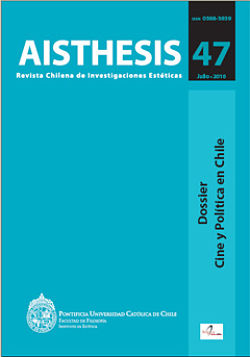Archive, Cinema, Politics: Latent Images, Remnants and Phantoms in Argentinean and Chilean films
Main Article Content
Abstract
The following article will use Imagen latente (1987) by Pablo Perelman to develop a few links between Cinema, Aesthetics and Politics. It will consider the film’s images as vanishing lines that will lead us to discuss the archive and the remnants in relation to the time lived by Chile and Argentina during their military dictatorship. For this, the article will consider the totalitarian impulses found in Europe. In this light, it will become relevant to discuss the notion of phantom, in relation to cinema, memory, and the phenomenon of disappearance. Thus, the text will establish resonances with other fragments and objects from Europe, Argentina and Chile, such as the films by Alain Resnais, El ausente (1987) by Rafael Filipelli, Los rubios (2003) and Restos (2010) by Albertina Carri, as well as the books El palacio de la risa (1995) and Lazos de familia (2001), by Chilean writer Germán Marín. Through this discussion, the article will try to emphasize the notion of archive, given its diverse technologies and materiality, by means of the politics and the art of cinema, considering their capacity to create necessary and unexpected links between mental and objectual images that configure — or disfigure — existence.
Downloads
Article Details

This work is licensed under a Creative Commons Attribution-NonCommercial-ShareAlike 4.0 International License.
All contents of this electronic edition are distributed under the Creative Commons license of "Attribución-shareAlike 4.0 Internacional" (CC-BY-SA). Any total or partial reproduction of the material must mention its origin.
The rights of academic works published in this publication belong to their authors., who grant to AISTHESIS: Revista Chilena de Investigaciones Estéticas the license for its use. The management of the permits and the authorization of the publication of the images (or of any material) that contains copyright and its consequent rights of reproduction in this publication is the sole responsibility of the authors of the articles
